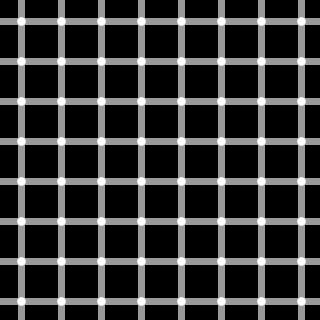 Over the weekend I was reading through a couple of blog posts written by various BPM bloggers. One of these in particular stood out to me as it very succinctly highlighted one or two of the human nature issues that plague BPM.
Over the weekend I was reading through a couple of blog posts written by various BPM bloggers. One of these in particular stood out to me as it very succinctly highlighted one or two of the human nature issues that plague BPM.The post in question was written by Keith Swenson and was entitled "Structure is in the eye of the beholder". In the post Keith talks about certain illusions that are ingrained into the human psyche which can effect the way people perceive and understand their world. This is particularly important when it comes to mapping it from a business point of view.
For example: When I look at a landscape I see the ground, the hills, the sky and the trees. There are no definite demarcation lines between each of these pieces, but when I draw them I tend to draw a line to indicate the horizon, a line to indicate the hills, and the trees are outlined to separate them from the background. In other words there us a tendency to add separation when - in reality - no separation exists. Translate this to business process and you have a situation where we try to compartmentalise things. As Keith says :
In reality activity is continuous and without distinct boundaries. It is the mind that interprets the activity, and draws in the boundaries between different activities. Without drawing these boundaries, it would be impossible to talk about what it being done, yet we should not forget that they are merely the result of analytical reasoning about the activityFurthermore there is the ability of the mind in hindsight allowing us to know and understand things that we didn't know or couldn't understand at the time things were happening. This manifests itself in the form of complete knowledge and understanding of something after the fact but an inability to appropriately describe or map it during the heat of battle. With hindsight people can't understand why it was so difficult to map a process when - in fact - it was merely the fact that it was mapped and understood that made the hindsight so clear.
The summary of these two pieces of human nature is the fact that we tend to try and put artificial boundaries around things that shouldn't have them, and tend to misunderstand how complex things really are after we have mapped them by thinking that we could have done a lot of the mapping in advance.
Does this mean that our efforts at mapping processes are all for nought? Are we doomed to fall into traps set by our own human nature? Will we forever fail at being able to make sense out of the reality of our life? Well, without this turning into a philosophical treatise (and I believe it could quite easily do so) we must remember that there will never be a perfect solution for problems such as these. The key is to know that there is a potential issue and to understand what impact that will have. Human nature will always play a major part in events when humans are involved. It's the same reason why 80% of people think they are good drivers but in reality this can't be true. But we know that this is how people rate themselves because it's human nature. As long as we take this into account we will be in an appropriate position to understand the reality of a situation rather than the perceived reality of the situation.
My thanks to Keith for his insightful post.
==========================================
Some housekeeping:
In one of my top posts from last year I wrote about '10 BPM Blogs you should follow'. After seeing the response to this post I have revised some of the entries following feedback and will be producing a curated list of top BPM bloggers that I am referring to as 'The BPM Blacklist'. This list will be available within the week and I will produce a post and a link to both the list, the feeds and the twitter accounts (where available)
.
Reminder: 'The Perfect Process Project Second Edition' is now available. Don't miss the chance to get this valuable insight into how to make business processes work for you. Click this link and follow the instructions to get this book.
All information is Copyright (C) G Comerford
See related info below

